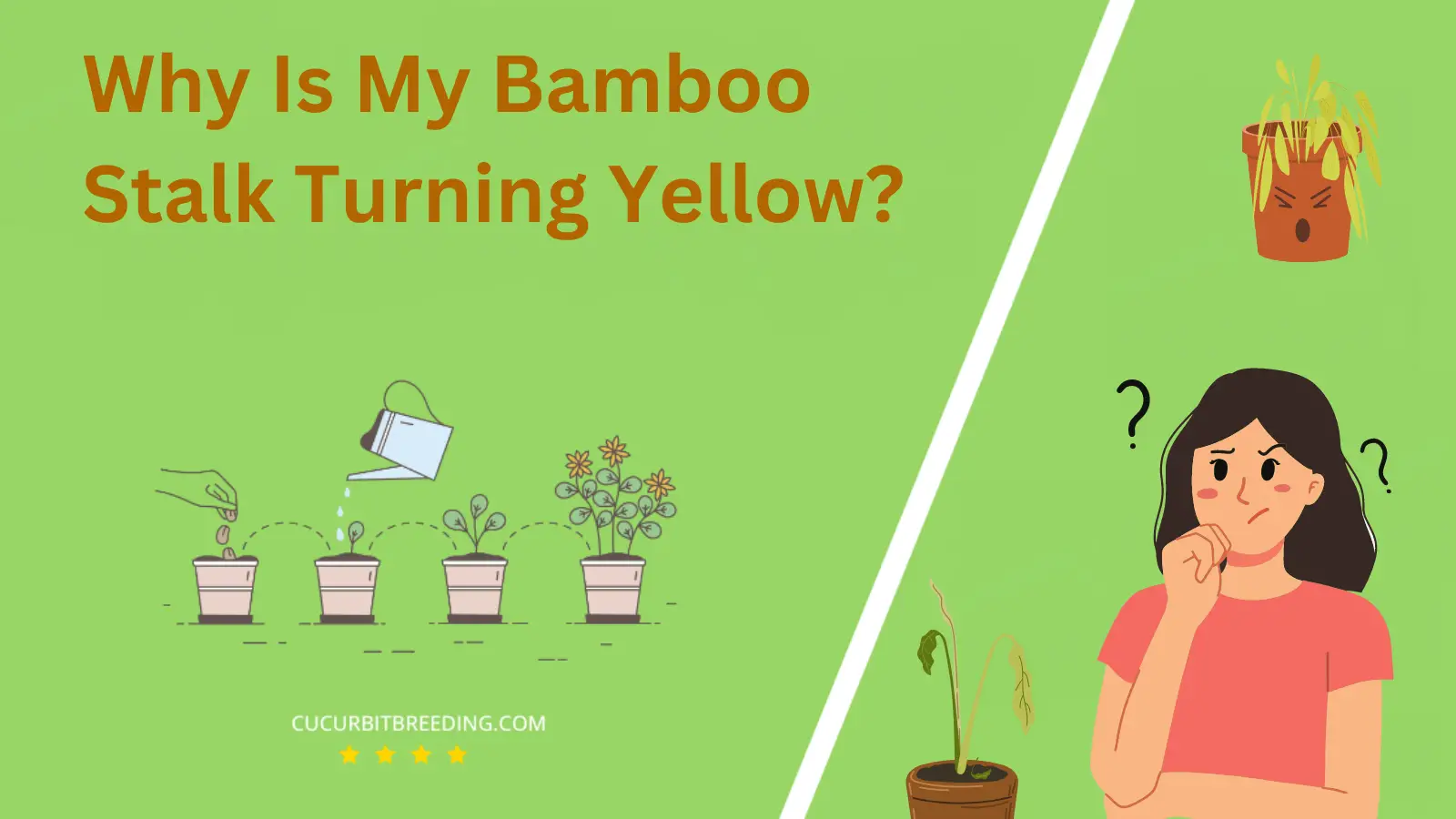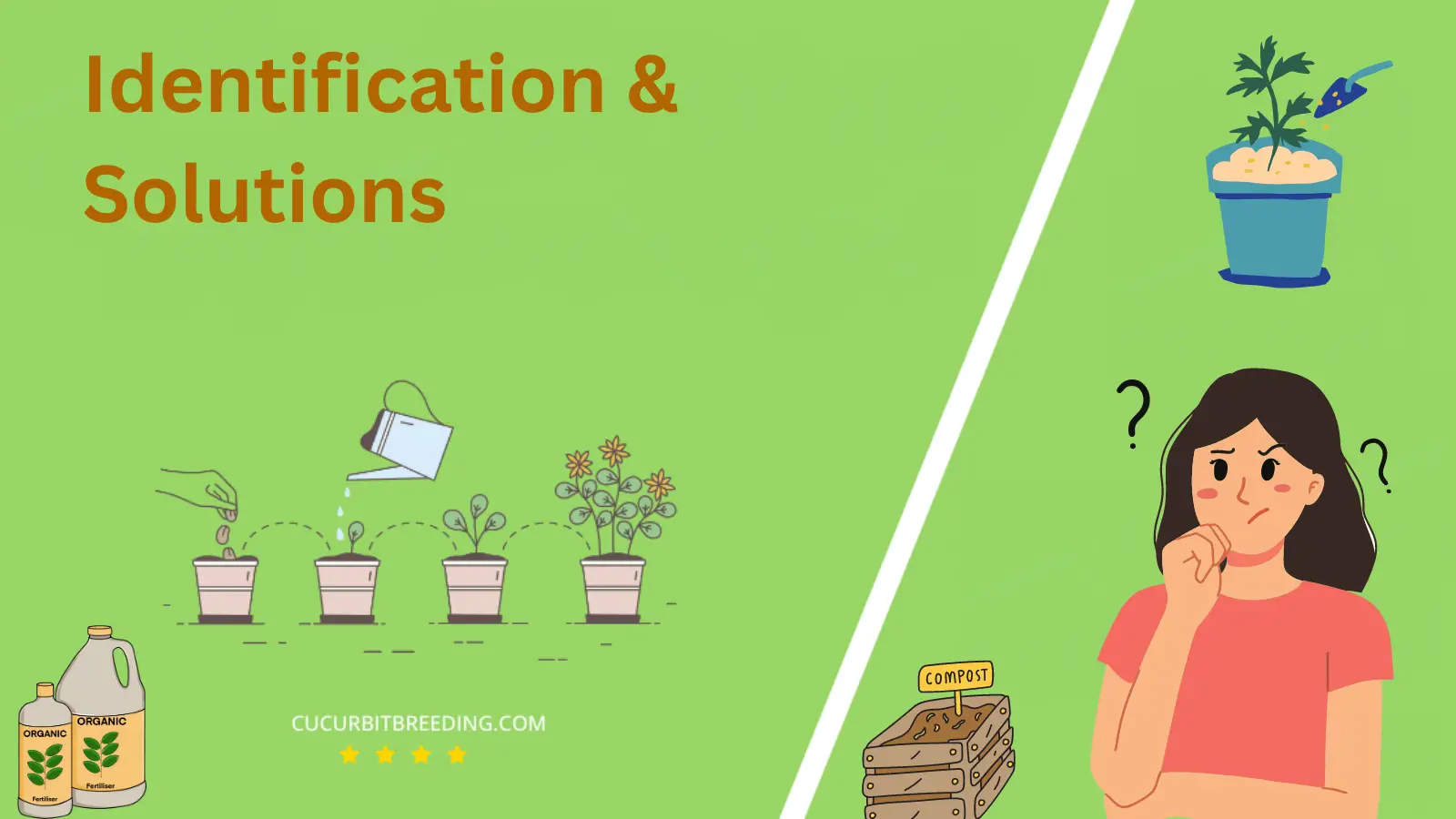
If you’re a plant lover, there’s nothing more disheartening than seeing your precious bamboo stalk turning yellow. This could be an indication of multiple factors that are not necessarily harmonious to your plant’s growth. From overwatering to inadequate lighting, or potential pests, it’s a distress signal that your bamboo needs attention.
But what’s causing your bamboo to lose its vibrant green? Let’s unravel this gardening mystery together, and explore how you can restore your bamboo’s health and vitality.
Why Is My Bamboo Stalk Turning Yellow?
1. Overwatering
| Description | causes excess water in the soil, leading to root rot and yellowing of the leaves. |
|---|---|
| Solution | Reduce watering frequency and ensure proper drainage to prevent root rot and revive the yellowing bamboo stalk. |
Overwatering can cause your bamboo plant to turn yellow because too much water deprives the roots of oxygen, leading to root rot. When the roots get damaged, they are unable to deliver an adequate amount of water and nutrients to the leaves, which can result in yellowing. Root damage due to overwatering is a common cause for many houseplants turning yellow.
To fix the problem, you should first ensure that the container or pot has adequate drainage to prevent water stagnation. Reducing the frequency of watering and allowing the soil to dry out between waterings can also greatly help. If the plant is severely overwatered and the roots are already heavily damaged, you may need to repot the plant. During this process, you can also remove any rotted roots to prevent further spreading of root rot. Proper watering habits and adequate drainage are key numbers to healthy bamboo plants.
As a preventative measure, try to make a watering schedule for your bamboo plant depending on its specific needs. Remember that bamboo plants are pretty tolerant, and signs of overwatering can be a sign that they need more time to drink between waterings. Consider the needs of your specific bamboo, since different plants require different amounts of water and light.
2. Underwatering
| Description | causes a lack of water and nutrients, leading to chlorophyll breakdown and yellowing of leaves. |
|---|---|
| Solution | Increase watering frequency to ensure the soil remains consistently moist, preventing yellowing of bamboo stalk. |
Underwatering is a common reason for your bamboo turning yellow. Bamboos, especially when growing in containers, require sufficient watering to keep their root systems moist and healthy. Insufficient water leaves the plant dehydrated, hindering nutrient uptake. This lack of necessary nutrition leads to chlorosis, which appears as yellowing of the bamboo stalks.
Effective solutions for preventing bamboo from yellowing due to underwatering include establishing a regular watering schedule, ensuring that the plant receives enough, but not too much water. Thorough watering until water comes out from the bottom of the container and leaves the soil moist to the touch is key in most cases. In severe dehydration, immerse the whole plant in water. Also, use a container with drainage holes to avoid water logging. Monitor the plant closely, adjusting the watering routine based on its reaction. In drier climates or seasons, more frequent watering may be needed.
3. Lack of sunlight
| Description | Insufficient sunlight causes the bamboo stalk to turn yellow due to reduced chlorophyll production. |
|---|---|
| Solution | Increase exposure to sunlight for the yellowing bamboo stalk. |
To resolve this issue,
Always remember, adequate sunlight plays an essential role in keeping your bamboo green, vibrant and healthy. Regular monitoring will be helpful to determine whether the plant gets the sufficient light it naturally requires.
4. Nutrient deficiency
| Description | Insufficient sunlight causes the bamboo stalk to turn yellow due to reduced chlorophyll production. |
|---|---|
| Solution | Increase exposure to sunlight for the yellowing bamboo stalk. |
When bamboo is experiencing a nutrient deficiency, it can cause the plant’s stalk to turn yellow. Lack of essential nutrients, particularly nitrogen, often causes this issue. Nitrogen is crucial because it’s part of chlorophyll, the compound that makes plants green and helps them photosynthesize. When a bamboo plant is deficient in nitrogen, it can’t produce enough chlorophyll, resulting in yellow stalks.
There are a few ways to rectify this situation. The primary solution is to amend the soil with a nitrogen-rich fertilizer. This can be a standard garden fertilizer or a specialized bamboo fertilizer. Be sure to follow the packaging instructions for proper usage and dosage. Additionally, it can also be beneficial to test your soil since other deficiencies or incorrect pH level might also be contributing to your bamboo’s discoloration.

5. Soil pH imbalance
| Description | Increase exposure to sunlight for the yellowing bamboo stalk. |
|---|---|
| Solution | Adjust soil pH with appropriate amendments or transplant to a well-draining soil to resolve yellowing bamboo stalk. |
Bamboo, like many plants, is quite sensitive to the pH level of the soil in which it’s planted. Too much acidity or alkalinity can interfere with the plant’s ability to absorb necessary nutrients, leading to discoloration. This might be why your bamboo stalk is turning yellow.
To correct soil pH imbalance, first you should conduct a soil test. This will help you determine whether the soil is too acidic or too alkaline. If the soil is too acidic, applying garden lime can help balance it. If it’s too alkaline, you can incorporate elements such as iron sulfate, sulfur or peat moss to adjust the pH level.
Regular monitoring of the soil pH after amendment is important to ensure it remains at the optimal level. Ideally, bamboo prefers slightly acidic soil with a pH between 6.0 and 6.5. Ensuring these conditions will help return your bamboo stalk to its vibrant, healthy green color.
6. Pests or diseases
| Description | Pests or diseases can cause the bamboo stalk to turn yellow due to physiological factors. |
|---|---|
| Solution | Inspect for pests or diseases, treat accordingly, and ensure proper watering and sunlight. |
If your bamboo stalk is turning yellow, it could be due to pests or diseases affecting the plant. Pests such as mites, aphids, or mealybugs can cause damage to the plant tissue, leading to yellowing. Similarly, diseases caused by fungi or bacteria can result in discoloration.
Solutions to this problem primarily involve proper pest and disease management. For pests, use natural pesticides or insecticidal soap to control their population. Remove infected parts of the plant to avoid spreading the problem. In case of disease, confirm the type of pathogen affecting your bamboo. Fungal diseases may require the application of fungicide, while bacterial infections might necessitate antibacterial sprays. Maintaining good hygiene in the garden helps prevent recurrence of pests and diseases. Ultimately, creating a healthy growing environment is key to ensuring your bamboo thrives.
7. Environmental stress
| Description | causes chlorophyll breakdown, leading to yellow coloration due to reduced photosynthesis and nutrient deficiency. |
|---|---|
| Solution | Provide adequate water, nutrients, and temperature control to mitigate environmental stress on the plant. |
The reason your bamboo stalk is turning yellow might be due to improper watering. Bamboo plants require water to maintain health, growth, and vibrancy. However, both underwatering and overwatering can negatively impact your plant, causing discoloration such as yellowing of the stems.
Underwatering deprives the bamboo of necessary hydration, causing stress and resulting in a yellow coloration. On the other hand, overwatering leads to waterlogged soil and poor oxygenation which can result in root-rot, making the stalk turn yellow.
To rectify this, you should adjust your watering schedule appropriately. Bamboo prefers soil that is damp but not water-logged. Check the soil’s moisture level before watering. If the top inch of the soil is dry, it’s time to water. If the soil is wet, let it dry out before watering again.
Also, ensure the plant is in a pot with good drainage to avoid water stagnation. In serious cases like root rot, it may be necessary to remove the affected parts of the plant to prevent the issue from spreading to healthy parts.